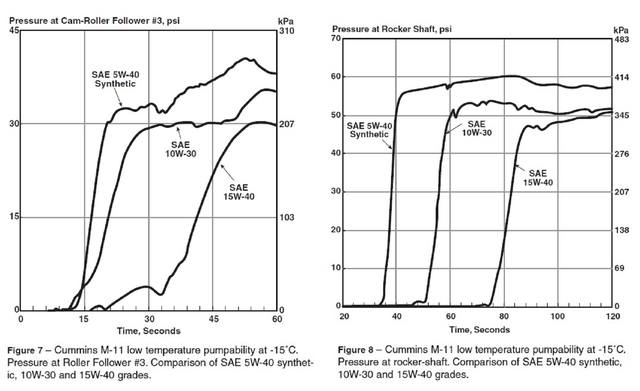Pressure and flow are the analogs of current and voltage in an electric circuit, respectively.
A positive-displacement pump is the analog of a variable current source, in which the current output (flow) is varied according to the rpm.
Yes, a current source generates a voltage across the circuit it is connected to (according to its resistance), and a positive-displacement pump generates a pressure according to the flow resistance (path diameters and lengths and oil dynamic viscosity) of the lubrication circuit it is connected to.
@CATERHAM demonstrated here a long time ago that the pressure is mainly generated at the engine bearings and the relevant dynamic viscosity is the high-temperature, high-shear (HTHS) viscosity. Therefore, oil pressure depends on HTHS and bearing clearances.
Yes, there is a relief valve on the oil pump, which will limit the pressure and saturate the flow, just like a current source in an electric circuit will saturate (max out) at a certain voltage.
A house water system is more like an analogue of a voltage source connected to a circuit, which generates a constant voltage, analogous to a constant pressure, across the circuit. Therefore, it behaves quite differently than a current source (positive-displacement pump), which generates a constant current (flow) through the circuit. (In the case of the positive-displacement pump, the oil-flow output is more or less proportional to the rpm (when the relief valve is closed); therefore, it's the analogue of a variable current source, in which the electric-current output can be adjusted through some parameter or control.)
The pressure and flow are governed by the
Hagen–Poiseuille equation. According to this equation, flow is directly proportional to pressure and inversely proportional to dynamic viscosity. Since the pressure generated by a positive-displacement pump increases with the dynamic viscosity, there is going to be little difference in oil flow when viscosity of the oil is changed. The pressure will change when you change the viscosity of the oil, but the flow will not change much, as going to a higher viscosity is made up by the increasing pressure.
Finally all the spring and ball do in an oil nozzle (such as for piston cooling and lubrication) is that they close the flow when the oil pressure drops below a certain value. This prevents engine damage by preventing further drop in the oil pressure. They aren't designed to regulate the oil pressure and flow otherwise. The nozzles are either open or closed in most scenarios. Toyota says in my Prius Prime new-car features manual:
(a) No. 1 oil nozzle subassemblies, for cooling and lubricating the pistons, are provided in the cylinder block subassembly.
(b) The No. 1 oil nozzle subassemblies contain a check ball to prevent oil from being fed when the oil pressure is low. This prevents the overall oil pressure in the engine from dropping.
I hope this helps clear things.






